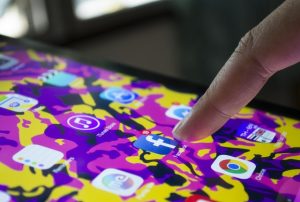Are you a regular traveler who needs to constantly stay online for your house extension business or another purpose? Travelers who are too careless with their digital information usually get freaked out about their computer use on the road and end up getting themselves into significant hassle and expenses.
Here we provide some security tips to help you aim for a middle ground cautiousness and protect your personal information
Safety Tips for Traveling with Your Own Device
In Europe, gadget theft has continued to be a daily issue especially if you’re taking your devices on the road. It is very important to keep your personal data private by configuring your gadgets for maximum security if they are stolen while taking absolute precautions to protect your devices from thieves.
- Ensure you are running the latest version of your device security software and operating system.
- You do not need an it cloud computing company to show you how to tighten your security settings, ensuring your device is password or passcode protected. Simply go into ‘change password’ and utilise one that has both lower and upper case letters, as well as numbers. Doing this will avoid thieves getting access to your information if it was stolen.
- If your device is already passcode protected, consider decreasing the time taken for the screen to lock especially when they are not in use. It might be annoying to keep entering the code whenever you want to use them. However, it is not going to be annoying too when it is stolen by thieves. When you are at home, you can relax the security setting but be cautious.
- To increase your device security, consider setting a password to some sensitive apps such as your Mail, Facebook, etc.
- Check your computer to ensure that the file sharing option is not activated. Though this setting is usually turned off by default, however, regularly check will help to prevent your file from getting accessed from people sharing Wi-Fi network with you.
- Utilize a “public network settings” when you update a new window version. This will automatically configure your computer so that it is less susceptible to invasion.
- When you are on the road make sure you use legitimate Wi-Fi and when you arrive at your hotel or café, ask the staff for the specific name of their network and make sure to log on to the exact one. Bogus hotspots are sometimes created by hackers with a similar or vague name like “Hotel Secured Free Wi-Fi” which usually shows up alongside a bunch of authentic networks. It is better if a network uses a hard-to-guess one password rather creating a network that will be free to the world.
- If you are not using your gadget hotspot, turn them off to avoid your device getting visible to others.

Safety Tips for Using Public Computers
- For tasks that don’t require you to log in to an account, it’s perfectly safe to use a public computer. For example, checking maps, train schedules, museum hours places specialising in home extensions in melbourne, etc. Doing something similar to the listed scenarios won’t pose a security risk. However, the danger lies in accessing accounts that require you to log in your passwords such as those cloud computing cloud style.
- Try to make your personal device your sole means of accessing your accounts especially if you’re traveling. However, if you will be depending on hotel-lobby computer or internet cafes, remember that you have no clue of who made use of it last and you might use it next. Public computers can be loaded with software which can track what you are trying including your passwords.
- Make sure the web browser you intend to use doesn’t store your login information if you need to access personal accounts on a public computer.
- Open an incognito or private browser window if the option is available on the public computer.
- Find a way to ensure that when you log in to any site, the browser forgets your username and passwords after you log out. For instance, unclick any box that says “stay signed in” or “remember me or click the box for “public or shared computer”.
- Clear the internet browser history, cache and cookies especially if you’ve accessed sensitive information. This will ensure that fewer artifacts of your surfing session remain. It is a good idea to carry out this process again when you are done with the computer.
- Set up two-step verification for some vital account. This will ensure that you enter the second code after you might have entered your password when you log in using an unfamiliar



